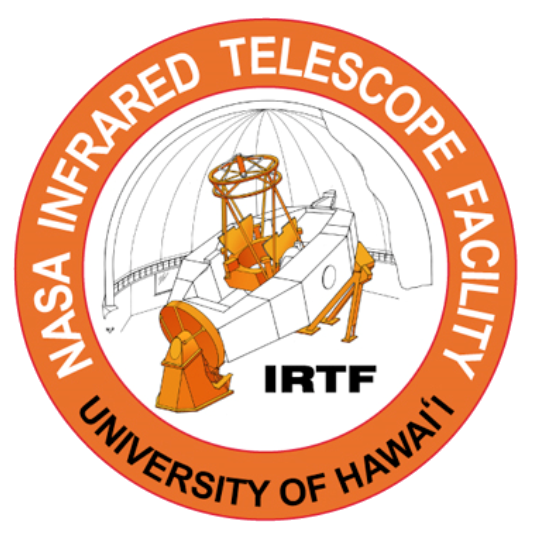Using VNC with the IRTF
- 1.1. About VNC
- 1.2. Requirements
- 1.3. Obtaining the VNC Client software
- 1.4. Accessing the VNC server
- 1.5. Viewing the VNC session
- 1.5.1. Starting the VNC viewer in Unix
- 1.5.2. Starting the VNC viewer in Windows
- 1.5.3. Starting the VNC viewer in MacOS
- 1.5.4. Starting the VNC viewer in a browser
- 1.6. Ending the VNC session
- 1.6.1. VNC Server for an instrument account
- 1.6.2. VNC Server for a program account
- 1.7. Tunneling VNC via SSH
- 1.7.1. on the commandline
- 1.7.2. using a program like putty
- 1.8. Staff VNC pages
1.1. About VNC
VNC stands for Virtual Network Computing - it is software that enables you to have a virtual desktop (server) on another computer. This virtual desktop can then be accessed using various clients (X11 interfaces, browsers, etc), giving you access to your virtual desktop from any location. For security reasons, the IRTF allows connections ONLY from RealVNC clients. Visit the VNC home page for more information.
1.2. Requirements
The stand-alone vnc client software from RealVNC must be installed on the computer. The vnc client (vncviewer) should be downloaded from the vnc webpage and may be installed on Linux, Unix, Mac, and Windows computers. A ssh client is also required to tunnel your vncviewer connection if your site requires this. A three-button mouse is required as well as a monitor capable of displaying 1080p resolution.
- Install RealVNC client software.
- Install a three-button mouse.
- Monitor must be capable of 1080p resolution.
1.3. Obtaining the VNC Client software
All users should download and install the free RealVNC client for their operating system.
The RealVNC clients can be downloaded by going to www.realvnc.com. Click "Download" for the version for your operating system and fill out the form. You may download as many versions as you will need and all the "Viewer Only" software is free. Only the Enterprise packages that include a server are not free.
1.4. Accessing the VNC server
Contact the telescope operator at (808) 974-4210 (or any member of the IRTF staff) and request the display number for the instrument you will be using as well as the VNC password of the day. This password is used on all instrument VNC servers and changes daily at 7:00 AM.
There are several permanent displays assigned to instruments at this time. They are:
- 1 - bigdog
- 2 - guidedog
- 3 - cartman
- 4 - kyle
- 5 - mirsi
- 6 - moc
- 9 - t3remote
- 10 - fct
- 12 - moris
IRTF staff members can start an extra vnc server for you should you require one, for which you will need to provide your program number. Once it has been started you may access it and the instrument servers using one of the methods listed below.
1.5. Viewing the VNC session
Note that any combination and number of viewers may be used to view the desktop from a vnc server. For example, one observer could be running on a Mac using vncviewer, another a client running on a Windows pc, and a third observer using a client on a Linux computer.
All clients require a hostname and display number to which the client will connect. The hostname should be stefan.ifa.hawaii.edu or 128.171.165.6 and the display number is designated as n below and should have been provided to you by the telescope operator or IRTF staff member from whom you obtained the VNC password.
1.5.1. Starting the VNC viewer in Unix
Open an xterm on your local computer and start the vnc client. You will be prompted for a password that will be given to you by the telescope operator.
% vncviewer stefan.ifa.hawaii.edu:n
Note: if you see a non-continuous (only a few gray levels) grayscale in DV, try running your client with the -FullColour or -FullColor options.
1.5.2. Starting the VNC viewer in Windows
Run the client and input the hostname and display: stefan.ifa.hawaii.edu:n. The VNC client will prompt you for a password that should have be given to you by the telescope operator.
1.5.3. Starting the VNC viewer in MacOS
Run the client and input the hostname and display: stefan.ifa.hawaii.edu:n. The VNC client will prompt you for a password that should have be given to you by the telescope operator.
1.5.4. Starting the VNC viewer in a browser
While it is possible to run a vnc viewer from any java-enabled browser (e.g. Netscape/Firefox/Mozilla or IE explorer), we do not support this method since the vnc java applet used by the browsers (whether on mac, windows, or linux) does not display the grayscale properly. It is restricted to 256 colors (8-bit) and there is no way to change that at this time.
1.6. Ending the VNC session
1.6.1. VNC Server for an instrument account
At the end of your observing period, and once the instrument mechanisms have been moved to their closedown positions, please exit your VNC session by closing your client. No other action is required.
Please do not close down the instrument guis or data viewers.
1.6.2. VNC Server for a guest account
When you are finished using the vnc server that was made for you (not the instrument servers), request that the telescope operator (or IRTF staff member) kill the server. You will need to provide the display number and the program number for which the server was created. Please note that killing the server will disconnect all the client sessions and shut down the server. If you do not explicitly request the telescope operator to do this, it will be done at the end of every night/day anyway, so please make sure you have saved any work you are doing before closing down after your observing slot.
1.7. Tunneling VNC via SSH
1.7.1. on the commandline
The ssh tunnel is created on a linux machine using the following command:
ssh -X -Y -C -g -L 59XX:localhost:59YY YYYYSPPP@128.171.165.6
- -X: enables X11 forwarding
- -Y: enables trusted X11 forwarding
- -g: allows remote host to connect to local forwarded ports.
- -L 59XX:localhost:59YY: forwards port 59XX on the localhost to port 59YY on the remote host.
- -C: compress the traffic. Optional. For a slower connection, this is useful. It can slow things down on a fast connection.
- YYYYSPPP@128.171.165.6: logs into stefan.ifa.hawaii.edu as YYYYSPPP. You need to replace YYYYSPPP with the program number you have been assigned, for example 2015A001. You can use either the hostname or the IP address to connect to stefan.
Once the ssh tunnel has been set up, you run the vnc client on the local machine from a second terminal or from the menus, and connect to the server localhost:59XX. It is very important that you not start the vnc client in the same terminal that is logged into stefan, as it will be extremely slow due to the fact that the vnc client is being exported from stefan to your local host.
Here is an example. In two terminals on the local client machine:
ssh -L 5901:localhost:5909 2015A001@128.171.165.6
vncviewer localhost:5901
This example opens the session on stefan:9.
1.7.2. using a program like putty
The ssh tunnel is created on a windows machine using the following steps, assuming putty is installed:
- Start putty
- Expand the SSH category on the left and click "Tunnels"
- In 'Source Port', enter 59XX where 59XX is the port on the local machine
- In 'Destination', enter localhost:59YY where YY is the session on stefan
- Click 'Add' to store the information
- Click the 'Session' category and enter the full hostname or ip for stefan
- To save the settings, type a name under 'Saved Sessions' and click 'Save'
- Click 'Open' to begin the ssh session and log into stefan using a guest account
- Note 1: tunnel L59XX localhost:59YY forwards port 59XX on the localhost to port 59YY on the remote host.
- Note 2: log into stefan.ifa.hawaii.edu as YYYYSPPP. You need to replace YYYYSPPP with the program number you have been assigned, for example 2015A001. You can use either the hostname or the IP address to connect to stefan.
Once the ssh tunnel has been set up, you run the vnc client on the local machine and connect to the server localhost:59XX.
1.8. Staff VNC pages
Staff members should be familiar with the instructions and information on the Staff VNC page.
The RealVNC install/config instructions are located on the SysAd Howto page.


